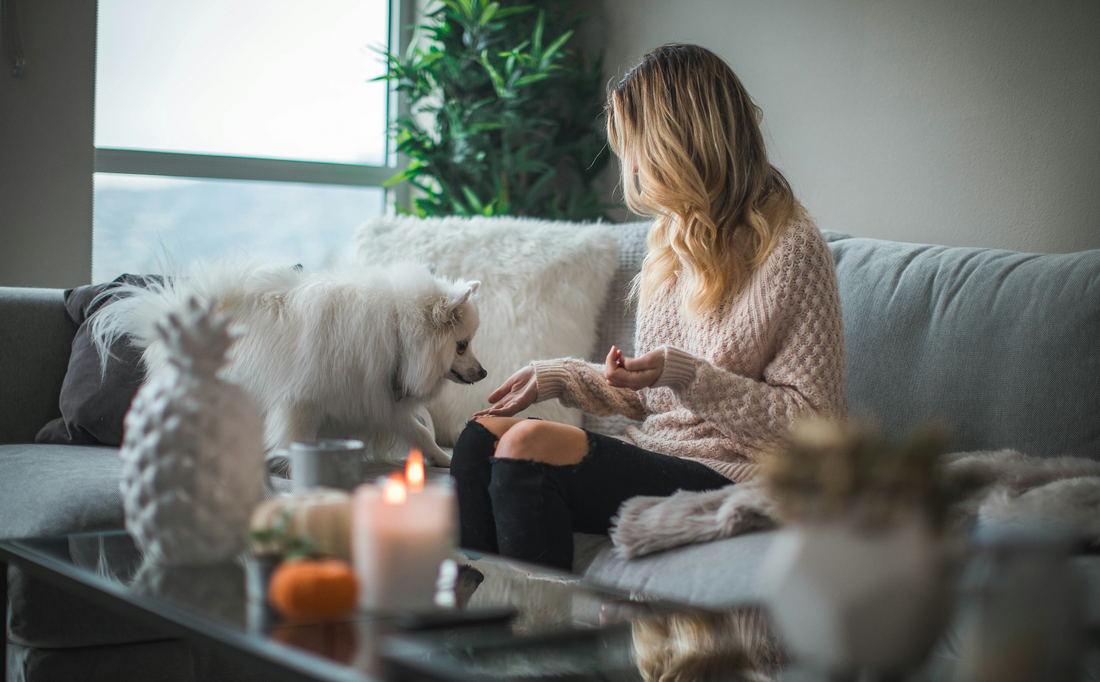
How to Help Your Pet Adjust to a New Home
Share
Moving to a new home can be an exciting yet stressful experience for your pet. The unfamiliar environment, new smells, and different routines can make it difficult for pets to feel comfortable right away. However, with the right approach and support, you can help your pet adapt smoothly to their new surroundings. In this guide, we’ll share tips on how to ease your pet’s transition to a new home and how HugWith products can play a part in making the process more comfortable for them.
1. Prepare a Safe and Comfortable Space
When moving into a new home, the first step to helping your pet adjust is to create a designated safe space for them. This could be a quiet room with their bed, toys, food, and water, where they can retreat to feel secure. Having familiar items like their blanket or a favorite toy can provide comfort and help reduce anxiety.
During this adjustment period, HugWith’s Pet Grooming Glove Wipes can help keep your pet clean and comfortable, especially if they are stressed and shedding more than usual.
2. Keep Their Routine Consistent
Pets thrive on routine, so maintaining their normal schedule is crucial for helping them settle into a new environment. Keep their feeding, walking, and playtime schedules as consistent as possible. Familiar routines provide a sense of normalcy and help reduce anxiety in a new setting.
Make sure your pet has their usual food, water, and exercise to help them feel more at home. If your pet seems anxious, you can introduce calming activities such as gentle grooming with HugWith’s products to soothe them.
3. Gradually Introduce Your Pet to the New Environment
Rather than allowing your pet to explore the entire house all at once, introduce them to one area at a time. Start with their safe space and gradually allow them to explore other rooms once they feel more comfortable. This will prevent them from feeling overwhelmed by the new environment.
For dogs, taking them on walks around the neighborhood will help them get used to the new smells and sounds outside. For cats, allowing them to explore at their own pace, starting with smaller areas, will help build their confidence.
4. Give Your Pet Extra Attention and Reassurance
Moving can be stressful not only for pets but also for their owners. During this transition, it’s important to give your pet extra attention and reassurance. Spend time playing with them, giving them treats, and offering gentle affection to show them that they are safe and loved in their new home.
Engaging in familiar bonding activities, like brushing your pet with HugWith’s Pet Grooming Glove Wipes, can provide comfort and help them feel more secure.
5. Monitor Behavior for Signs of Stress
It’s normal for pets to exhibit some signs of stress when adjusting to a new home. Common signs of stress in pets include:
- Hiding or withdrawing from family members
- Loss of appetite
- Excessive grooming or licking
- Whining, barking, or vocalizing more than usual
If these behaviors persist beyond a few weeks, it may be a good idea to consult your veterinarian. In some cases, they may recommend calming aids or behavior therapy to help your pet adjust.
6. Help Pets Adjust to New Sounds and Smells
One of the biggest challenges for pets in a new home is getting used to unfamiliar sounds and smells. Be patient with your pet as they explore and become familiar with their new surroundings. Try to minimize sudden loud noises that could startle them, and if possible, introduce new smells gradually.
For pets that are more sensitive to changes, HugWith’s products, such as the Pet Grooming Glove Wipes, can help provide a calming, familiar scent while keeping them clean during this period.
For more expert advice on helping pets adjust to new environments, check out these trusted resources:
- ASPCA: How to Help Pets Adjust to a New Home
- American Veterinary Medical Association: Moving with Pets
- PetMD: How to Help a Dog Adjust to a New Home
By following these tips and using HugWith’s products to create a calm and comforting environment, you can make your pet’s transition to their new home as smooth and stress-free as possible.
